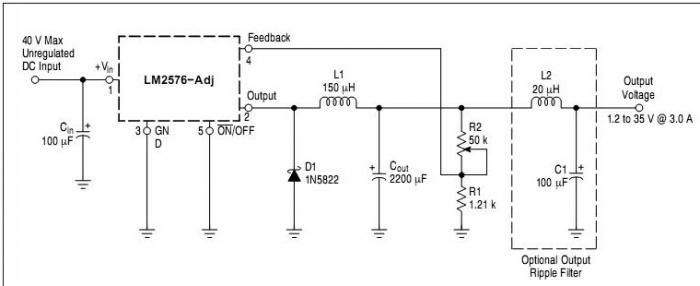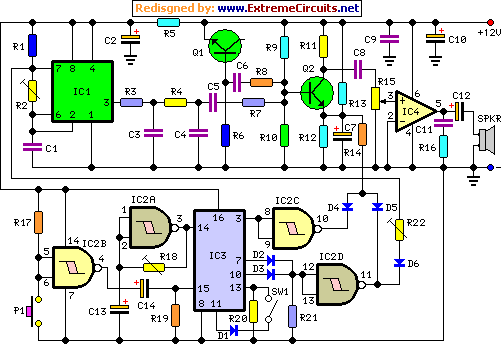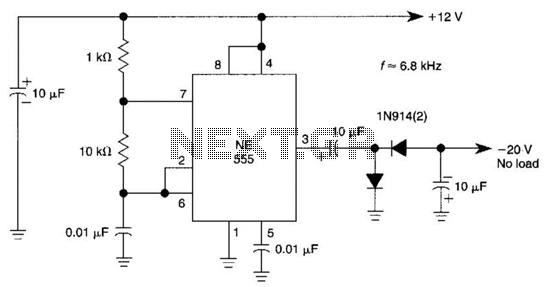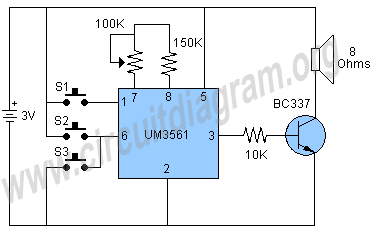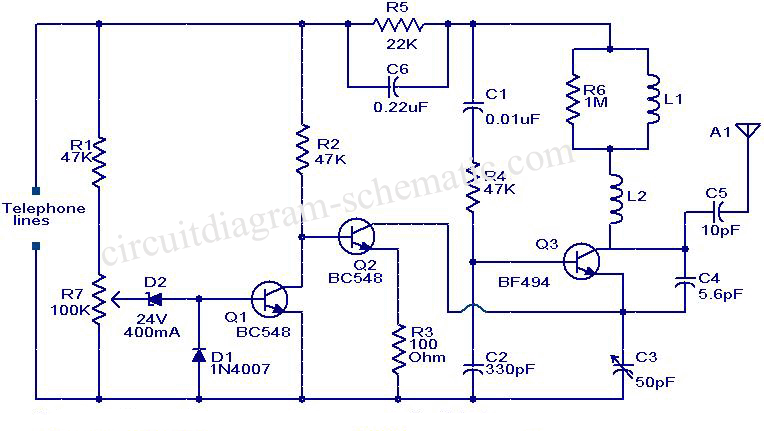
Simple Surround Sound Decoder

This surround-sound decoder is based on the "Hafler" principle, first discovered by David Hafler sometime in the early 1970s. The original idea was to connect a pair of speakers as shown in Figure 1, for use as the rear speakers in the surround setup. This is ok just as it stands, but problems are created if the main speakers are bi-amped or using bridging, for example, since there is no longer a full-range / full power signal available for the rear speakers. There is also no way to control the level reproduced, since it will always simply be the difference signal between left and right channels. If the signal is mono, then the signal in both channels will always be more or less identical, and there will be no output from the rear speakers at all.
The described surround-sound decoder utilizes the Hafler principle, which effectively creates a pseudo-surround sound experience by deriving a rear channel signal from the difference between the left and right audio channels. In a typical stereo setup, the decoder processes the incoming stereo signals to generate an output that can drive additional speakers placed behind the listener, thereby enhancing the spatial audio experience.
The circuit typically involves a differential amplifier configuration that takes the left and right channel inputs and computes their difference. This difference signal is then amplified to drive the rear speakers. The output stage of the decoder must be carefully designed to ensure that it can handle the varying power demands of the rear speakers, particularly in setups where the main speakers are bi-amped or bridged.
In cases where the main speakers are bi-amped, the absence of a full-range signal can lead to inadequate power for the rear speakers, as the decoder relies on the difference signal, which may not be sufficient in such configurations. Additionally, the decoder lacks a level control mechanism, resulting in a fixed output level that may not match the desired volume for the rear speakers.
To address these limitations, an adjustable gain stage could be integrated into the circuit to allow for fine-tuning of the rear speaker output. This could be achieved with a variable resistor or potentiometer that adjusts the gain of the difference signal before it reaches the rear speaker outputs. Furthermore, to ensure compatibility with mono signals, a summing amplifier could be included to combine the left and right channel signals, producing a suitable output for the rear speakers even when the input is not stereo.
In summary, while the Hafler surround-sound decoder provides a straightforward solution for creating a surround sound experience, careful consideration must be given to its design, particularly in systems with bi-amped or bridged main speakers, to ensure optimal performance and control over the rear channel output.This surround-sound decoder is based on the "Hafler" principle, first discovered by David Hafler sometime in the early 1970s. The original idea was to connect a pair of speakers as shown in Figure 1, for use as the rear speakers in the surround setup.
This is ok just as it stands, but problems are created if the main speakers are bi-amped or using bridging, for example, since there is no longer a full-range / full power signal available for the rear speakers. There is also no way to control the level reproduced, since it will always simply be the difference signal between left and right channels.
If the signal is mono, then the signal in both channels will always be more or less identical, and there will be no output from the rear speakers at all. 🔗 External reference
The described surround-sound decoder utilizes the Hafler principle, which effectively creates a pseudo-surround sound experience by deriving a rear channel signal from the difference between the left and right audio channels. In a typical stereo setup, the decoder processes the incoming stereo signals to generate an output that can drive additional speakers placed behind the listener, thereby enhancing the spatial audio experience.
The circuit typically involves a differential amplifier configuration that takes the left and right channel inputs and computes their difference. This difference signal is then amplified to drive the rear speakers. The output stage of the decoder must be carefully designed to ensure that it can handle the varying power demands of the rear speakers, particularly in setups where the main speakers are bi-amped or bridged.
In cases where the main speakers are bi-amped, the absence of a full-range signal can lead to inadequate power for the rear speakers, as the decoder relies on the difference signal, which may not be sufficient in such configurations. Additionally, the decoder lacks a level control mechanism, resulting in a fixed output level that may not match the desired volume for the rear speakers.
To address these limitations, an adjustable gain stage could be integrated into the circuit to allow for fine-tuning of the rear speaker output. This could be achieved with a variable resistor or potentiometer that adjusts the gain of the difference signal before it reaches the rear speaker outputs. Furthermore, to ensure compatibility with mono signals, a summing amplifier could be included to combine the left and right channel signals, producing a suitable output for the rear speakers even when the input is not stereo.
In summary, while the Hafler surround-sound decoder provides a straightforward solution for creating a surround sound experience, careful consideration must be given to its design, particularly in systems with bi-amped or bridged main speakers, to ensure optimal performance and control over the rear channel output.This surround-sound decoder is based on the "Hafler" principle, first discovered by David Hafler sometime in the early 1970s. The original idea was to connect a pair of speakers as shown in Figure 1, for use as the rear speakers in the surround setup.
This is ok just as it stands, but problems are created if the main speakers are bi-amped or using bridging, for example, since there is no longer a full-range / full power signal available for the rear speakers. There is also no way to control the level reproduced, since it will always simply be the difference signal between left and right channels.
If the signal is mono, then the signal in both channels will always be more or less identical, and there will be no output from the rear speakers at all. 🔗 External reference
